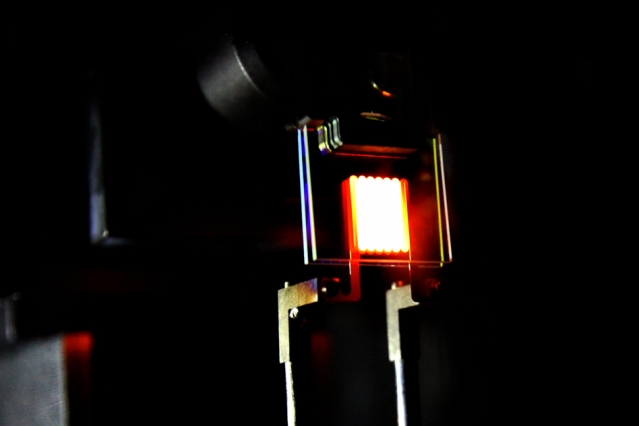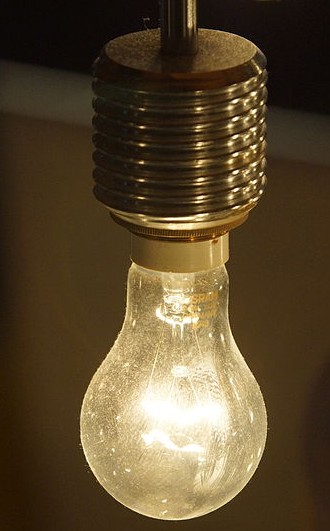
MIT researchers aiming to save incandescent bulbs from the grave
by Cleantech Canada Staff

Century-old technology could be given second life by recapturing wasted heat, making traditional bulbs more energy efficient

The proof-of-concept device built by MIT researchers. They say the device already achieves efficiency comparable to some compact fluorescent and LED bulbs. PHOTO: MIT
CAMBRIDGE, Mass.—Traditional incandescent light bulbs are supposed to be on their last gasp.
Already battered by the introduction of compact fluorescent bulbs (CFLs), the widespread adoption of light-emitting diode bulbs (LEDs) was supposed plunge the market for century-old incandescent technology into darkness once and for all.
Despite the bleak outlook, a team of researchers at the Massachusetts Institute of Technology has been working to grant the brainchild of Thomas Edison a stay of execution—and if their new tweak on the old tech proves effective—they may just do it. According to the team’s latest report, a process they’ve dubbed “light recycling” has the potential to greatly improve the energy efficiency of incandescent bulbs—to the point they even supersede newer CFLs and LEDs.

A traditional incandescent bulb, which uses a tungsten filament to create visible light. The MIT researchers are working to improve the old technology. PHOTO: Sasha Taylor, via Wikimedia Commons.
Traditional incandescents work by heating a thin tungsten wire, known as a filament, to about 2,700 C. The scorching band of metal radiates a broad-spectrum light that has illuminated cities around the world for more than 100 years. The drawback of incandescents, however, is their inefficiency. As individuals and businesses work to improve their environmental footprint, the two or three per cent energy efficiency of incandescents fails to measure up. CFLs, for example, sport an efficiency rating of seven to 13 per cent, while LEDs are from five to 13 per cent efficient, according to the MIT researchers.
The Cambrdige, Mass.-based team, made up of physics professors, Marin Soljačić and John Joannopoulos, as well as power engineering professor Gang Chen and several other key members, are looking to bring the old technology into the energy efficient era.
The key to the innovation, the researchers say, is a two-stage process.
Instead of simply allowing the heat from the 2,700 C tungsten filament to dissipate and be lost to the surrounding air, the new approach uses secondary structures that capture and reflect the heat back into the filament. This radiation is then re-absorbed and re-emitted as visible light.
“These structures, a form of photonic crystal, are made of Earth-abundant elements and can be made using conventional material-deposition technology,” the scientists noted.
The heat recycling technology could allow incandescents to reach efficiencies as high as 40 per cent, the researchers said— though the proof-of-concept designs have not reached that point yet. The concept design, which has achieved 6.6 per cent energy efficiency is already an improvement over traditional incandescents, however. In addition to generating light, the researchers say the process—which centres on the photonic crystal reflectors—could also have “dramatic” implications for energy conversion schemes such as thermo-photovoltaics.
For now, however, the researchers played down the breakthrough, saying consumers should still be looking to LEDs to cut down on energy consumption.
“LEDs are great things, and people should be buying them,” Soljačić said.
“But understanding these basic properties” about the way light, heat, and matter interact and how the light’s energy can be more efficiently harnessed “is very important to a wide variety of things,” he added.
Follow us at: @CleantechCan